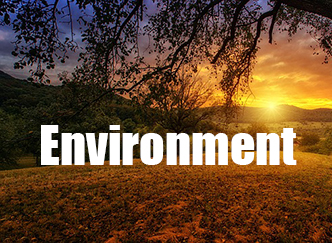BY LE BOYD AND WINONA LADUKE
For the past four years Dawn Goodwin, of Rice Lake, Minn., has driven thousands of miles, and missed weeks of family time and work to challenge the rights of a Canadian oil pipeline company – Enbridge, which threatens Anishinaabe water. The past three weeks of November were no exception as Goodwin drove to St. Paul to testify at the Minnesota Evidentiary hearing on Line 3.
Goodwin was joined by Bill Paulson of White Earth, Minn., and many tribal members who also drove from the reservations of the north. Legal teams representing White Earth, Leech Lake, Fond du Lac, Mille Lacs and Red Lake had also come to oppose the pipeline. They were joined by landowners, environmental groups and a group of Youth Climate Intervenors, who were asking what the future will look like for them.
What we face is the largest pipeline project in the US, a Canadian pipeline company with billions of dollars, which was defeated last year by our community – both Native and non-Native. This is an epic legal and regulatory case, and is a story of Modern Day Monster Slayers.
Over the past months, the battlefield has bloodied. Enbridge is now buying advertisements throughout Minnesota, and rolling in trucks of employees and would-be-employees, who are batting hard at witnesses at the hearings. In the mean-time, the state of Minnesota seems to be finding more and more concerns about the proposed pipeline, as the Department of Commerce in November recommended against issuing a permit for the 915,000-barrel-a-day tar sands project.
Ojibwe Grandmothers from Fond du Lac cooked food each day for those of us who had traveled far for the meeting, and held strong at the rear of the room –a watchful eye on all. Levi Brown, Leech Lake’s Natural Resource Manager, brought in 160 statements by tribal members who do not want a new line through that reservation and want the old line cleaned up.
It is history being made and it would be nice if we could share it. Although these twelve hearings were part of a public process and a matter a public record, an administrative law judge ruled that there was to be no photography, audio recording, or video recording allowed in the Public Utilities Commission hearing room during the proceedings. That means that the people who are the most impacted by the proposed pipeline – like Goodwin – must drive hundreds of miles to listen to a hearing on what is essentially their future. Many were upset about the decision, including those who could have live streamed the whole proceeding instead of having to offer their own summaries of events during breaks or at the end of each day.
The evidentiary hearings differed from the public comment hearings in that they revolved around prefiled testimony. Only formal expert witnesses for Enbridge and intervenors could make comments, and were subject to cross examination by members and attorneys from opposing parties. The public was welcome to attend the hearing but could not make comments.
Paulson and Goodwin were both expert witnesses. Though it wasn’t easy to plan the trip to testify due to unpredictable scheduling on the part of the state and long distances, Paulson and Goodwin both made it to St. Paul. With encouragement and support of friends and allies, both worked past the drain on their already limited resources to make sure their voices were heard by the state.
Paulson told administrative law judge Ann O’Reilly, “Enbridge and the State of Minnesota appear to refuse to acknowledge the impact on the future of the Anishinaabe from the construction of the proposed Line 3 tar sands oil pipeline. The expansion of this fossil fuel system has not demonstrated an ability to prevent catastrophic contamination and, if approved, could ultimately end the existence of the Anishinaabe people by robbing us of our spiritual and physical needs. I ask the courts, how can I best help your honor, the other parties in the case, and all others that need to know, what it means to value and feel Mother Earth?I find it hard to explain our connection to the plants, animals, and our sacred lands. If the wild rice is harmed, we are harmed, if the wild rice disappears, we disappear.”
Speaking on the topic of connection to nature often brings indigenous Water Protectors back to the same conclusion; our values are simply not the same as those of the state. In fact, the state’s Draft Environmental Impact Statement (EIS) suggests that the Anishinaabeg can essentially adjust if there is a huge spill, and does not provide any analysis of a no-build option; an essential component of a comprehensive EIS. As well, the state EIS, projected to be approved –but lacking significant Anishinaabeg analysis – isolates this proposed project from the impact of the tar sands mining which would feed the proposed pipeline, and the downpipe impacts.
To better understand and represent the Anishinaabe analysis, the Minnesota Chippewa Tribe and Honor the Earth (a non-profit organization founded to raise awareness and financial support for Indigenous environmental justice) created the Anishinaabe Cumulative Impact Assessment (ACIA). This is a nearly three-hundred page document that explores the Anishinaabe world-view and applies it to the Line 3 project in a way the state of Minnesota was unable to do. The ACIA takes a long view – historically and seven generations ahead – and gives honor to our Nibi (water) and those as a first medicine.
Furthermore, it gives greater weight to the conditions of our waters – what they should be, what they have become due to the current levels of industrial pollution, and what they might be with impacts from the Line 3 project. The document is currently in its draft form and available to view on the Minnesota Chippewa Tribe website at mnchippe-watribe.org. Input and comments are welcome and can be submitted to ACIA comments@mnchippewatribe.org. The comment period will remain open until February 2, 2018.
On the heels of the recent South Dakota Keystone spill of 210,000 gallons, it is now more important than ever for our communities to stay engaged in the fight. Nonetheless, days after Keystone’s largest spill yet, it’s next phase was approved by state officials in Nebraska, making room for the revived Keystone XL project to move forward.
According to Nebraska law, the spill couldn’t be taken into consideration while making the decision on whether to approve KXL because pipeline safety is a matter for PHMSA, and therefore federal and beyond the state’s purview. It is yet another indication of the sys-tem’s bias in favor of the fossil fuel industry, much like the no-recording policy for the Line 3 evidentiary hearings.
As the pipeline moves closer to approval, public participation in the process seems to grow more and more difficult. Where in the beginning, meetings were held in 22 small town communities, we have come now to the point of twelve days of hearings in St. Paul, nowhere near the demographically poor populations the pipeline will affect most. These closed hearings, though supposedly a matter of public record, are now only accessible through the obtuse state of Minnesota docket system, which will lead to formally submitted testimony and the records submitted by transcriptionists employed by the state.
Goodwin says she told the judge a lot about the toxic properties of diluted bitumen and what it would do in a marine environment if it were to spill in one of our Minnesota lake systems. She told the judge, “The certificate of need should not be granted due to the toxic and harmful properties of diluted bitumen.”
It’s unfortunate that there will be no image or video for anyone to share Goodwin’s words, voice, and strength across Turtle Island. But we do have a docket number: PL-9/CN-14-916 (Certificate of Need) and PL-9/PPL-15- 137 (Route), and in the months ahead, we will all need to be Water Protectors.







